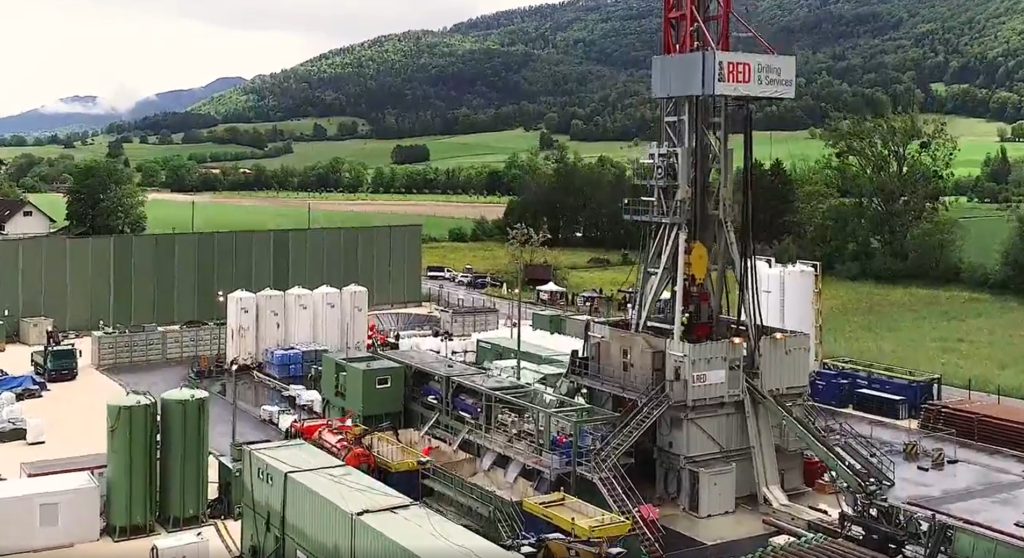
New seismic monitoring tools resulting from a three-year international research project on risk reduction in deep geothermal projects led by ETH Zurich have been deployed at the site of the Haute-Sorne geothermal project by Geo-Energie Jura AG in the canton of Jura, Switzerland.
The De-Risking Enhanced Geothermal Energy Projects (DEEP) project has developed a system that records micro-seismic signals in real-time during reservoir stimulation and uses this data to create models that will predict seismic activity in the coming minutes, hours, and days. The prediction system was first tested on data from existing geothermal projects and then in real time in the Bedretto underground laboratory (BedrettoLab).
“We now have a forecasting system that has proven its suitability for use in the laboratory, but also under real conditions,” said Stefan Wiemer, Professor of Seismology and Director of the Swiss Seismological Service at ETH Zurich.
The Haute-Sorne project
Drilling at the Haute-Sorne site started in May 2024. The well is targeting a depth of 4000 meters into crystalline rock, where temperatures of 160 to 180 °C are expected.
After a detailed evaluation of the geological data obtained during drilling, stimulation tests are planned for the first quarter of 2025. The drilling is part of the first phase of the pilot project, and the results of the tests will play a key role in deciding whether the second phase of the project can be implemented as planned.
Hydraulic stimulation is planned to be conducted at the deeper sections of the well to create permeability channels. This is expected to produce micro-seismic activity, ideally at levels that are imperceptible at the surface. This is particularly controversial in Switzerland following occurrences of induced seismicity related to a geothermal project in Basel, which as ultimately abandoned in 2009.
“If this system had been available in Basel in 2006, it would have been recognized early on that damaging earthquakes were likely and the stimulations would have been stopped a day or two before these noticeable earthquakes occurred,” commented Wiemer.
In consideration of these sensitive matters, a patronage committee set up by the Swiss federal government was assigned to the Haute-Sorne project to ensure that good governance principles and quality standards are observed in all work and processes.
Testing in Utah FORGE
Tests of the seismic prediction system were also done at the site of the Frontier Observatory for Research in Geothermal Energy (FORGE), a project funded by the US Department of Energy in Milford, Utah. A total of 15 stimulations were done in the Utah FORGE drilling site between 2022 and spring 2024.
Experts from Geo-Energie Suisse AG measured the data from induced micro-seismicity during reservoir stimulation and processed them for the prediction system. “We were able to show that the real-time predictions of possible earthquakes are reliable, and our people were also able to train how to use the prediction system under real conditions,” said Peter Meier, CEO of Geo-Energie Suisse.
Wiemar believes that the results from the DEEP project will be instrumental in reducing risk in deep geothermal projects. “We are making good progress in our efforts to create seismological safety for stimulations.”
The predictive seismic monitoring to be tested soon in Haute-Sorne addresses a major point of concern for reservoir stimulation and deep geothermal projects, particularly in Switzerland. This paves the way not just for technical and economic viability of deep geothermal, but also improved social acceptance and guarantee of regulatory compliance.